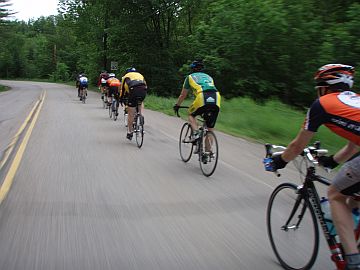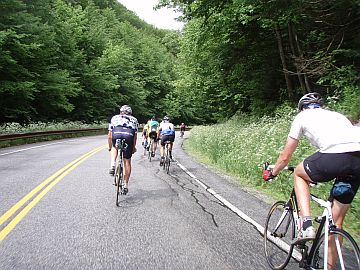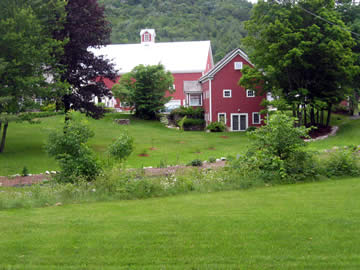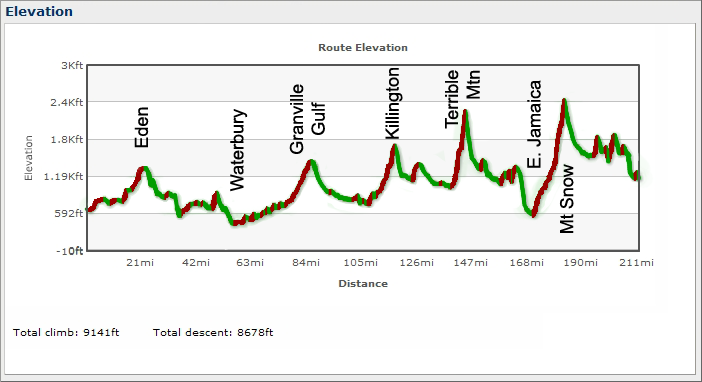| HOME | THE ROUTE | GENERAL NOTES | TRAINING TIPS | LODGING | HISTORY | REGISTER | WHO'S RIDING? | 2022 RIDE REPORT |
| Training Tips |
More information on training for centuries and double-centuries is available online. Information on true randonee events in Vermont and New England is available at New England Randonneurs and Berkshire Brevets. Upstate New Yorkers have Adirondack Ultra Cycling, which organizes brevets right through the winter!. A full list of randonneuring organizations is available on RUSA's website. I like this short aticle on riding doubles from Road Bike Action. The Ugly Middle: This is what ultra-cyclists call the stretch between 80 and 120 miles in the ride, where the majority of DNFs occur. We think it helps if you're prepared for it, so expect this to happen after the Killington climb. Killington is long and wearing. It's shady, but you've ridden over 100 miles--perhaps too quickly--and you're likely to have doubts that you have the legs left for both Terrible Mtn and Mt Snow. After the US-4 descent, you turn south in Bridgewater and there are two things that sap your spirit. First, there always seems to be a headwind here, and the sun is overhead. Second, it begins with a long, deceptive uphill. It looks almost flat, but seems so hard to ride on pace. By the time you get to Ludlow (140 mi) and the feared Terrible Mountain climb, you may have convinced yourself that it would be better to come back and try it again some other year. Our suggestion is to wait until the top of Terrible Mountain before you decide to quit. Chances are that this is all it will take to convince you to go on and finish, and what do you have to lose? Break up the rest of the ride into increments that you can take satisfaction in completing. If you feel you just don't have it when you get to the Mt. Snow climb, follow the river on VT-30 to Brattleboro and finish there. Tim and Ted's 200 on 100 In 2011, racers Ted King, Tim Johnson and Ryan Kelly rode almost the same route at something approaching a race pace and blogged about the experience. Their reports and video make for great entertainment, but remember, you can do this ride with a lot less pain!
In 2015, just two weeks after the 200-on-100, Ted King, Tim Johnson, and a morphing entourage of fellow riders and supporters again did the route at race pace--basically a team time trial with a few breaks. They rode through the 10-mile construction zone, sans asphalt, up the Mt. Snow climb, and even added in the VT-100 "dog-leg," instead of ending south of Readsboro, yet still finished the 216 miles in nine and a half hours of ride time. Trying to keep up with this crew is an amazing, if futile experience for we mere mortals! |
|
The bunch climbing early in the day Starting the Granville Gulf descent Pittsfield farm |
Trailer from what we hope will be a full-length video of the 2015 Tim & Ted's 200 on 100



